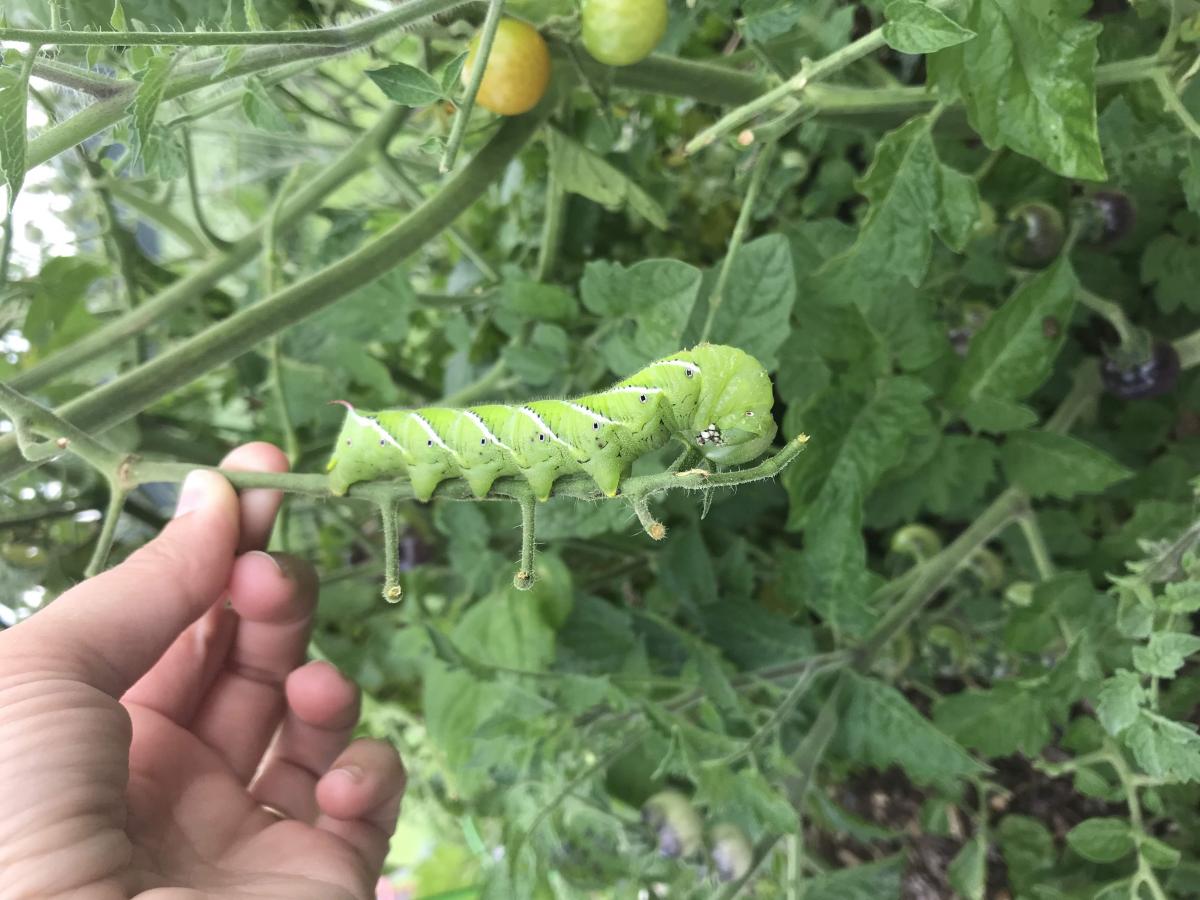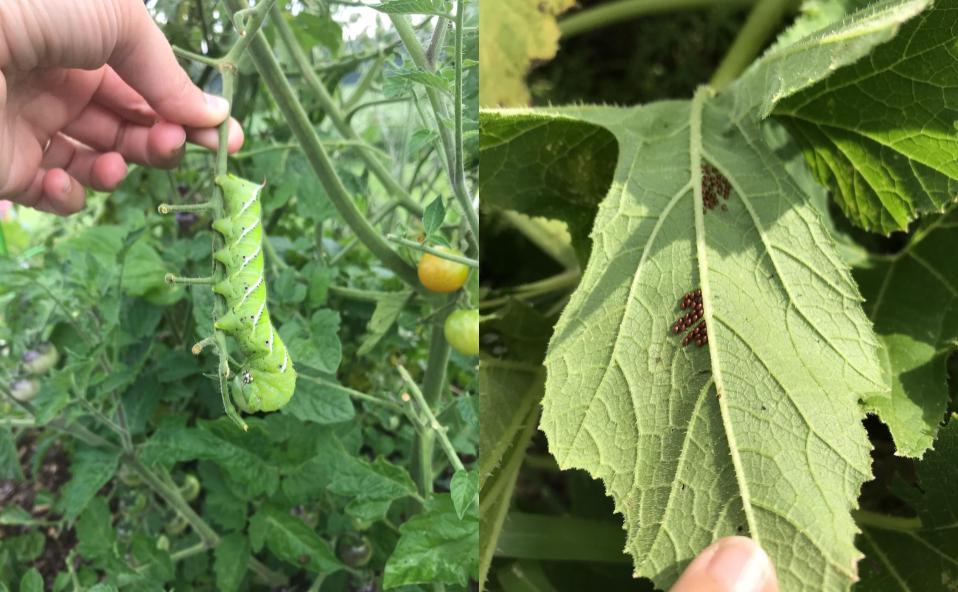If you have not noticed summer is officially here. The hot dry weather can do significant damage to our plants and gardens. Here are some tips to help you along the way:
Outdoor Garden and Yard Tips
- Spotted lanternfly adults may be found feeding on many hosts, especially tree of heaven (Ailanthus altissma). Report any finds to the Maryland Department of Agriculture immediately, collect a sample or take digital photos on what you have found.
- Japanese beetles may be feeding heavily at this time. Brush the beetles into a bucket of soapy water held underneath foliage or branches. The use of Japanese beetle traps near your plants is not recommended. Studies show that traps can attract more beetles to your landscape resulting in increased damage.
- Mulch your landscape now if you haven’t done so already. Mulch helps keep weeds down and conserves soil moisture. Mulch should be applied 1-2 inches deep and kept away from tree and shrub trunks.
- Bagworm caterpillars are now very active. Look for little bags crawling around on evergreen trees and shrubs and be prepared to spray infested trees with the microbial insecticide, Bt by mid-July. Mature bagworms are not well controlled with Bt They are best collected by hand and destroyed or sprayed with insecticides containing spinosad.
- Proper lawn mowing is critical to help it survive the summer. “Mow ‘em high and let ‘em lie” should be your mowing strategy. Cut your cool-season turf (fescues and bluegrass) to a height of 3-4 inches and leave the clippings on the lawn where they will naturally decompose.
- Chrysanthemums and asters should be cut back halfway by mid-July to encourage fall blooming. If not trimmed they will bloom later this month and not in the fall.
- Patrol your yard for mosquito breeding sites. At least twice a week, check and remove water that may be standing in trash and recycling cans, flower pot saucers, children’s and pets toys, wading pools, tires, tarps or plastic sheeting.
- Ticks are active year-round. After spending time outdoors in an area where ticks may be present get in the habit of doing a tick check upon your arrival home.
- Tie all dahlias and lilies to the upper third of their stakes. Stake gladiolus as they gain height.
- Harvest or deadhead dahlias and other flowering bulbs and annuals.
- Check the moisture in plant containers every three to four days. Check small pots and hanging baskets every day.
Vegetable Garden
- The hot July sun will quickly heat up the water in a hose. Run the hose until the water is tepid before watering the garden. A vegetable garden needs at least 1 inch of water per week in the summer.
- Blossom-end rot of tomato, pepper, squash, and watermelon causes the bottom (blossom) end of the fruit to become brown and rotted. Remove injured fruits, water plants well, and mulch to conserve soil moisture. Consistent watering and adequate calcium can prevent this disorder.
- Squash vine borer larvae are feeding inside squash and pumpkin stems. If leaves are wilting, or you see holes in the lower stems, with sawdust-like fresh, or droppings around the holes, slit the stem above the hole and with a razor and remove the larva. Then mound soil around the injured stem.
- Brown rot infects peach, cherry, and plum fruits. Pick peaches when background color changes and before fruits become fully ripened. Bring fruits indoors, submerge them in a 1:10 bleach to water solution to kill brown rot fungal spores, rinse well, and allow them to ripen in the kitchen.
- Leave blueberries on the plants for three to five days after they turn blue. This allows berries to reach their maximum sugar content.
- Harvest onions when tops die back; let them dry in the garden after digging them up, or tie the stems together and hang them up in a garage or attic with good air circulation. Store onions in a cool, dry place.
- Dig up garlic when the tops yellow and die; let dry in the sun, then store in an airy place before braiding, or storing in mesh bags, and hanging in a dry place.
Indoor Plants and Insect Tips

Photo: Tomato Hornworms are active in July. During their three-week lifespan, these caterpillars can gain more than one thousand times their weight. (Photo credit: Rachel Rhodes)
 Photo: Squash bug eggs: These little copper eggs are often found on the underside of squash leaves and on stems. Eggs hatch in about 10 days, and nymphs mature in about four to six weeks. Both adults and nymphs hide under leaves when disturbed. (Photo credit: Rachel Rhodes)
Photo: Squash bug eggs: These little copper eggs are often found on the underside of squash leaves and on stems. Eggs hatch in about 10 days, and nymphs mature in about four to six weeks. Both adults and nymphs hide under leaves when disturbed. (Photo credit: Rachel Rhodes)
Rachel J. Rhodes, [email protected] is the Horticulture Educator and Master Gardener Coordinator for the University of Maryland Extension in Queen Anne’s County. She is one third of the Garden Thyme Podcast. The Garden Thyme Podcast is a monthly podcast where University of Maryland Extension Educators, help you get down and dirty in your garden, with timely gardening tips, information about native plants, and more!
For further information, please visit https://extension.umd.edu/queen-annes-county/master-gardener-home-gardening or see us on Facebook @ https://www.facebook.com/QueenAnnesCountyMasterGardeners or listen to The Garden Thyme Podcast at: https://www.buzzsprout.com/687509
University programs, activities, and facilities are available to all without regard to race, color, sex, gender identity or expression, sexual orientation, marital status, age, national origin, political affiliation, physical or mental disability, religion, protected veteran status, genetic information, personal appearance, or any other legally protected class.



Write a Letter to the Editor on this Article
We encourage readers to offer their point of view on this article by submitting the following form. Editing is sometimes necessary and is done at the discretion of the editorial staff.